
50cc Roadracing 1961
Story by Joep KortekaasSo it were the privately modified and tuned mopeds that set the whole thing in motion - and therefore we should never look with pity or even contempt at those early attempts, however primitive they might look to present eyes! And now let's have a look at those early ones. The very first 50 cc production racer that I have discovered was, surprisingly, a 1955 British Britax, which was powered by a Ducati 'Cucciolo' (= "little pup") engine, a four stroke with "pull rods" (there was a 'D' shaped part going around the cams, and this pulled a rod downwards, and via a lever operated the valves), Well, somebody once gave me a Cucciolo, and even if the Brits would have been able to triple the original power, which was 1.25 bhp, it was still nothing to write home about. But the only thing they did was increasing the valve spring rate and fitting an open megaphone. According to sources of the time it was never a success. Ah well. |
 |
|
 |
In Holland the DMF (Driebergse Motoren Fabriek) engine proved popular in the earliest races. These engines had no gearbox, only a multiple clutch, but they were very sturdy and reliable, had good tuning potential and a generously finned cylinder and head. They were mounted in a kind of monocoque frame, without rear suspension. I only have an action picture of budding Dutch racer Cees van Dongen, who won all nine races that were organised in 1954 on it! (the same DMF engines were also mounted under the saddle of some three wheeled pedaled little lorries, which gave them the nickname "beefsteak warmers"). Cees' DMF had a top speed of 100 km/h. | |
Another private bike was my Puch engine based special, for which I built my own frame. The engine lost its cooling fan and got a large set of cooling fins shrunk on and a DMF cylinder head. Top speed was about 105 km/h, but the two-speed gearbox proved inadequate.. Pic. shows me at 17 years old behind the bike in 1961. Later I mounted an engine consisting of a sawn-off HMW crankcase, with a DKW 98 cc three-speed gearbox and dry clutch bolted on. The cylinder again got aluminium cooling fins shrunk on. HMW cylinders were popular, because they had little covers over the transfer ports where they entered the cylinder, which made it easy to work on them. The bike is shown below. Carburettor was a 17 mm Bing, with remote float chamber. The expansion exhaust pipe was a trial-and-error job. The bike had a top speed of nearly 110 km/h.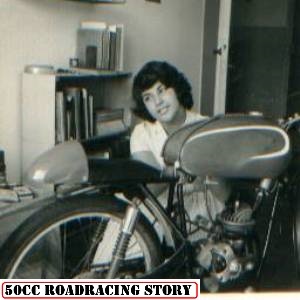 |
 |
|
| Next bike is the Nougier, a privately built bike by two Frenchmen, the brothers Nougier. It was a four stroke DOHC, with hairpin valve springs, drive to the camshafts by gear train. Bore and stroke 39 x 39 mm, compression ratio 11.8 : 1, carburettor Dell'Orto SS1 with 18 mm diameter. Inlet valve diameter 22 mm, exhaust 20 mm. No power output known, but top rpm was 13,000 and top speed given as 'over 100 km/h'. Weight of the bike was 60 kg. The frame seemed to have been based on that of the Morini-Guilietta, and apart from the crazily long front forks, the bike looks very well, a neat piece of engineering. | 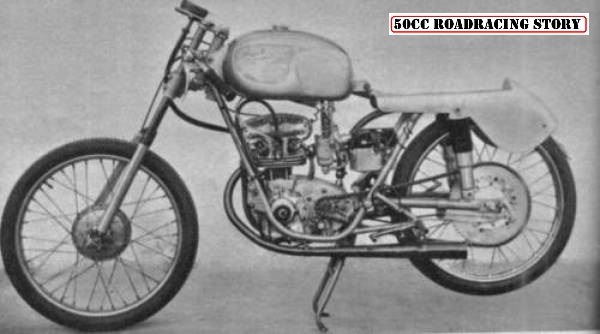 |
|
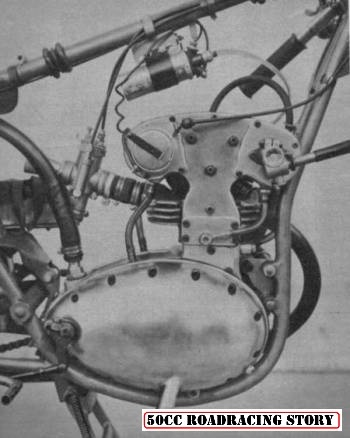 |
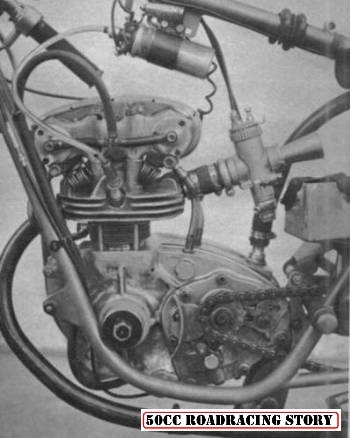 |
|
| Itom and Dutch rider Van Koeveringe around 1958. No special racing tyres in those days - just the normal white walled tyres as were popular on the more luxurious mopeds! | 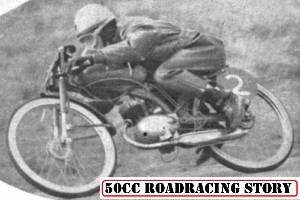 |
|
| Morini-Guilietta 1 and 2 show the Morini production racer of 1958, over which I was always drooling. The bike cost (in 1960) 1200 guilders, and my pocket money was some 10 guilders per week...The owner of bike 1 must have thought that drilling little holes in the cylinder head fins would improve the cooling (with a 5 mm hole, the area that you loose is less than the area you win), but I'm afraid very little air will flow through the holes. The owner of bike 2 really improved the cooling, but neither rider seemed ever to have heard of expansion exhaust pipes. Gear change by rotating handle on the left clip-on, three-speed gearbox, Dell'Orto SS1 carburettor. | 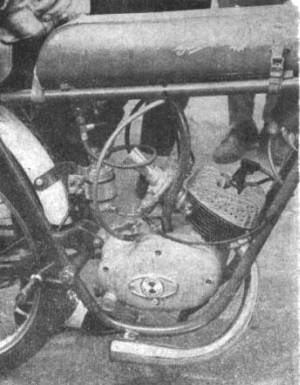 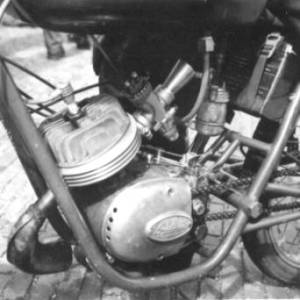 |
|
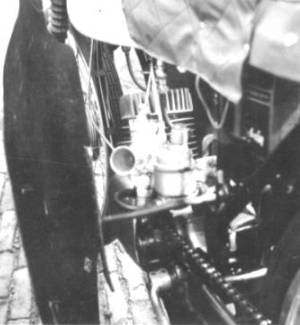 |
NSU50 shows the bike of Dutch rider Aad van Exel, based on an NSU engine, with home built cylinder, head and frame. | Sachs1 shows the bike of an unknown rider, who used two 12 mm standard carburettors on one inlet stub, probably inspired by a lack of money. The original bicycle pedal was used as brake pedal, and the cylinder head still had the decompression valve fitted. All in all, there were more professional bikes around. |  |
| In early 1961, the French magazine Moto Revue published a number of drawings and photos of 50 cc bikes that had been used over the past season and would be used during 1961. Some of those bikes were based on the popular Itom, already mentioned a couple of times. Itom3 shows the bike as delivered by the factory - Itom4 shows a bike as modified by its owner. Not much is known about it but that it was stopped at the Monthlery course at 108.6 km/h. | 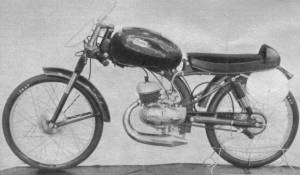 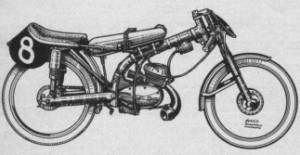 |
|
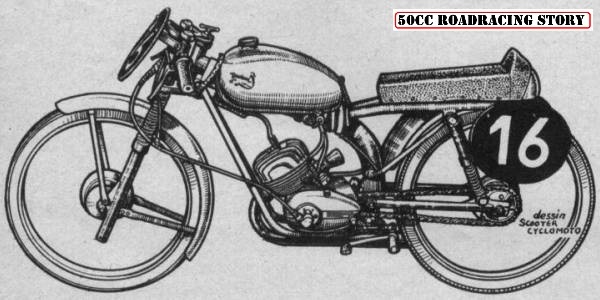 |
Ducson shows a Spanish bike, with clearly a modified Itom frame. Of this bike was known that it had a bore and stroke of 40 x 39 mm, and an 18 mm Zenith carburettor; power output was 6.5 bhp at 10,000 rpm. Four-speed gearbox. | |
 Special3 shows a home-built bike with a Peugeot engine. Not an example of appealing aesthetics. Special5 shows a bike built from a multitude of different parts. The crankcase came from a 100 cc Terrot, the crankshaft from Peugeot, the cylinder came from Mobylette (which was very suitable, being made of aluminium with a hard-chromium plated bore), gearbox from a 125 cc Monet-Goyon, home-made rotating inlet - and the whole mounted in a Morini frame. That's the spirit! |
 |
|
About Special6 not much is known, except that it had a two speed gearbox. By the looks of it, I think the engine was a modified Mobylette.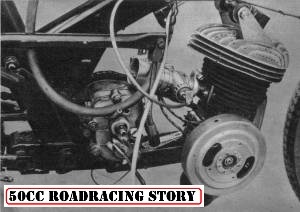 The Waldner was a fully home-built four stroke DOHC engine by a German father and son combination. Note the oil cooler underneath the front frame tube. |
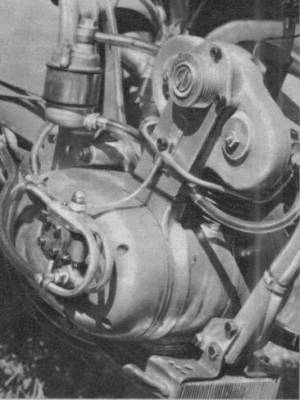 |
|
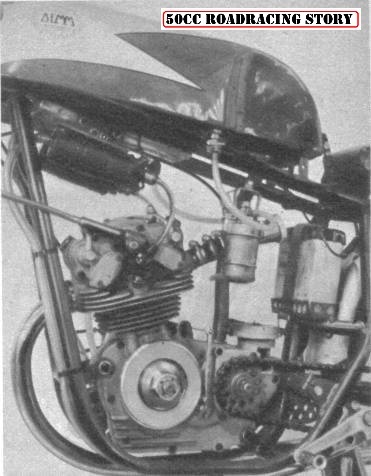 |
 Demm10 and 11 show their four-stroke racer at the Milanese motorcycle show of 1961. Shaft-driven DOHC. External flywheel, as can be seen in Demm11. |
|
| I'll end this piece of history with a picture of the 1959 works Kreidler - based on a standard Florett. | 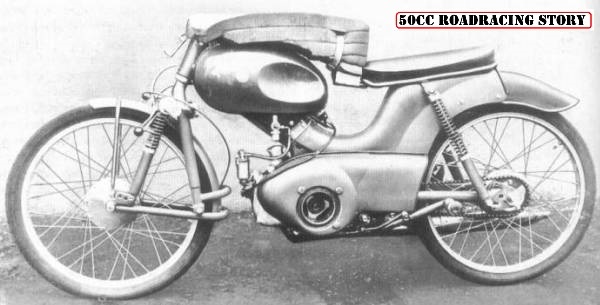 |
|
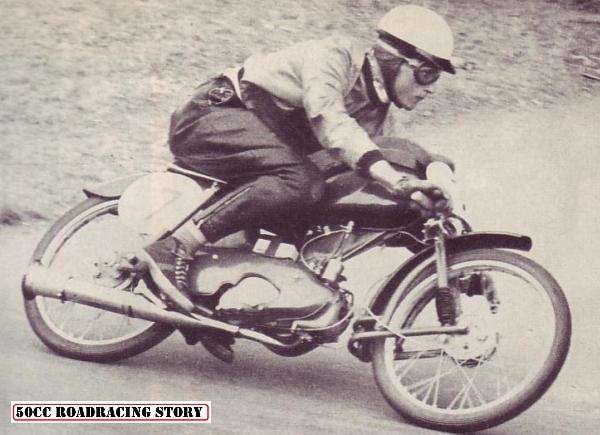 |
Dieter Kramer racing a Kreidler with "trumpetphone" exhaust - Hockenheim 59. |
|
 |
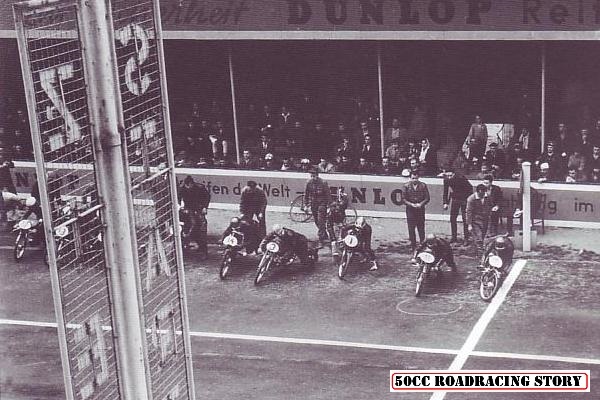 |
|
The 1961 Coupe d'EuropeThe participants in the fight for the Coupe d'Europe were an army of private individuals, and two works teams - the already mentioned Kreidler and the Yugoslavian Tomos. Tomos built Austrian Puch mopeds in license, and their racing bike was to a large extent based on this moped. The Kreidlers were air cooled two-strokes with 2 rotating inlet discs, and a four speed foot-changed gearbox, augmented with a hand-changed 3-speed box, giving a choice of twelve gears! The frame was a steel tube construction, with swing-arm front and rear forks. |
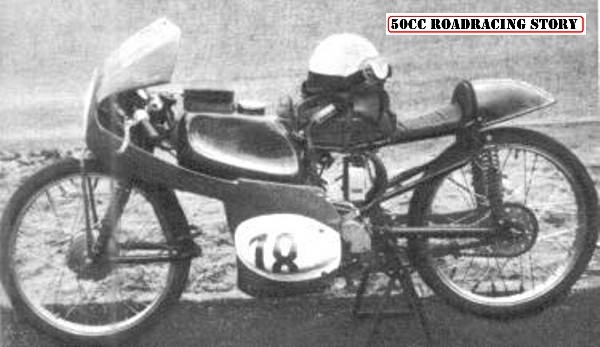 |
|
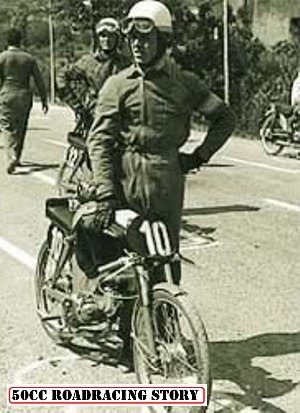 |
Compared to that, the Tomos racers were simplicity itself, with a normal piston controlled inlet port and a 5-speed gear box, housed in the standard, pressed-steel frame . However, notwithstanding that, they really were a thorn in the side of the Kreidler team, but the latter prevailed, and Hans-Georg Anscheidt won the Coupe d'Europe, with his team mate Wolfgang Gedlich taking second place, and Pierre Vervroegen on an Itom third. The Tomos riders Heinrich Rosenbusch and Miro Zelnik came in fourth and fifth. One reason for their ending rather low was the fact that they did not compete in all the races. | |
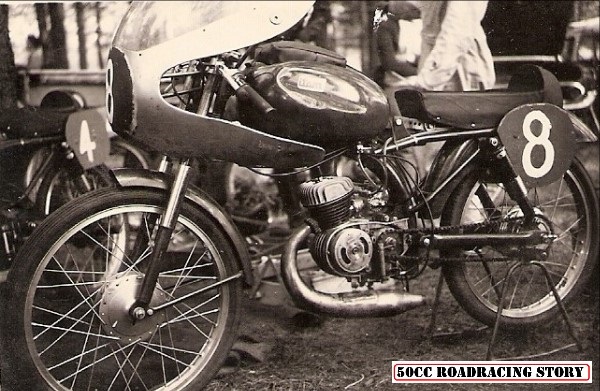 |
||
| As already said, there were large numbers of private riders with their own developed machines, and a number of them were worthwhile to see. Kreidler 15 and 16 show two privately built racers based on Kreidler engines, photographed at Zandvoort in 1961 during a Coupe d'Europe race. No. 58 was built by the Kramer brothers, well known Kreidler tuners in those days. | 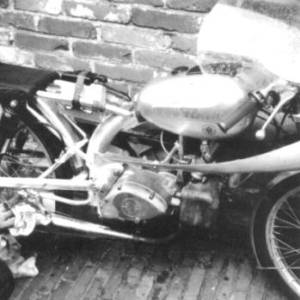 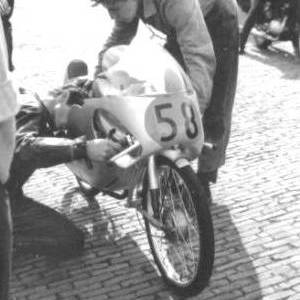 |
|
 |
Kreidler10 shows Anscheidt's winning works bike. | |
| The Petry was an interesting home-built bike that was reasonably fast but in the end not very successful in the races for the Coupe d'Europe. Water cooled cylinder and air-cooled head, rotating inlet, 5-speed gearbox. | 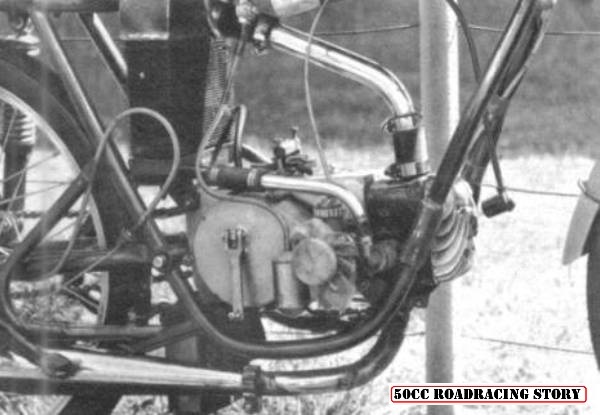 |
|
 |
||
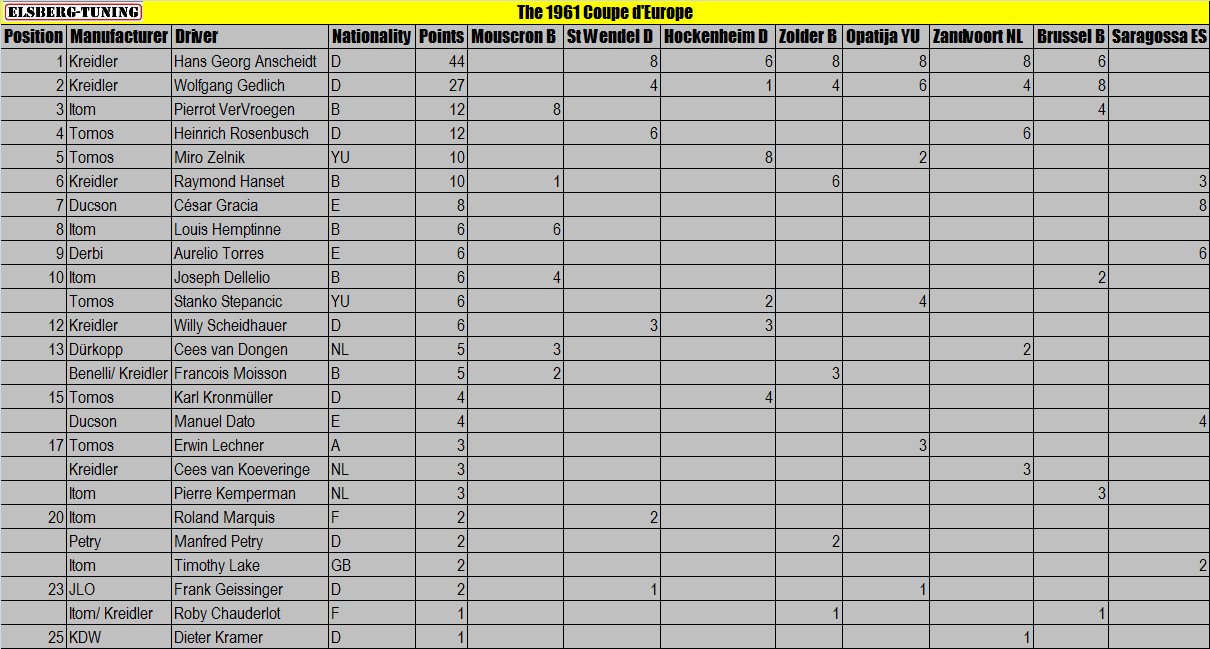 |
Pictures from the races: |
|
StWendel, Germany |
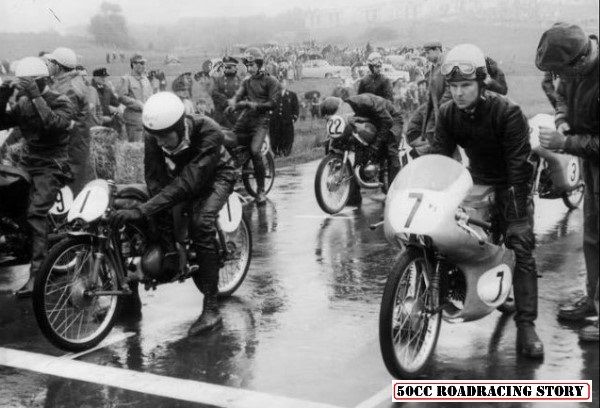 |
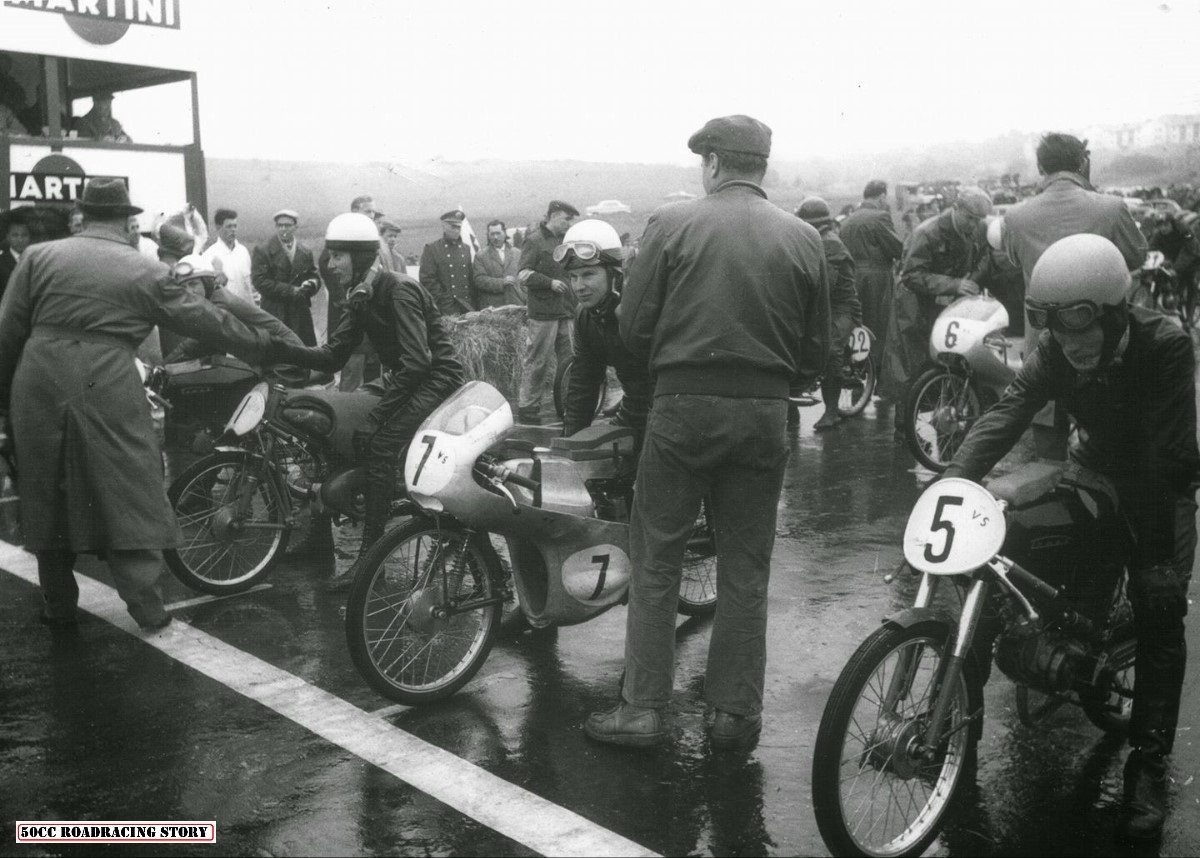 |
Hockenheim, Germany |
 |
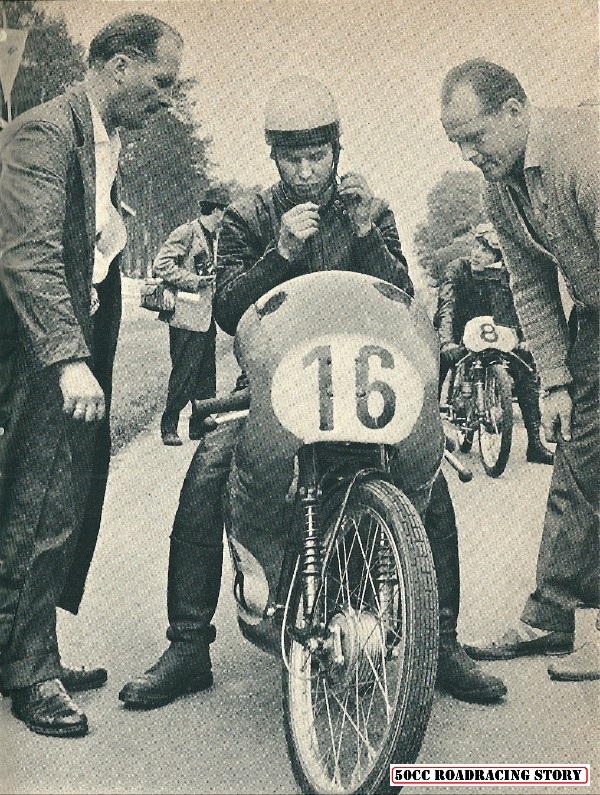 |
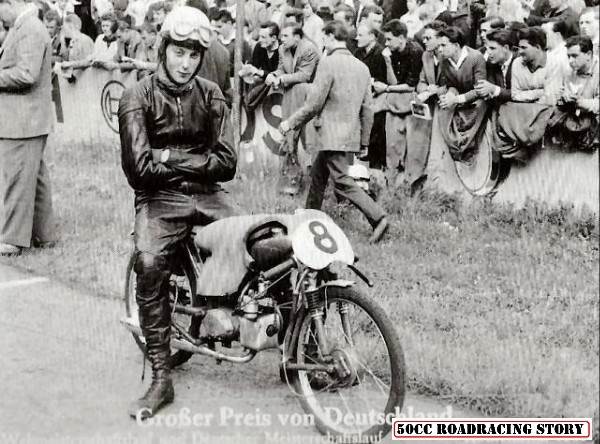 |
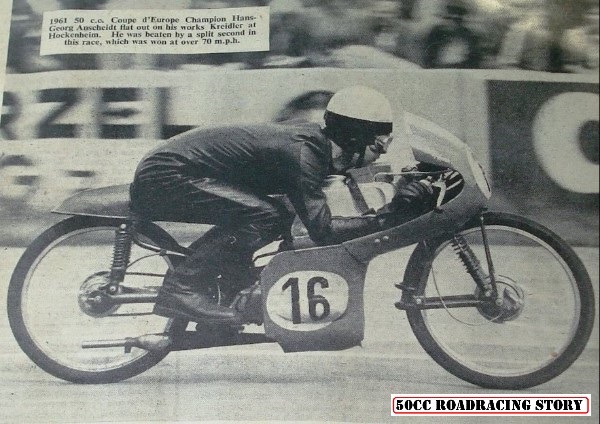 |
 |
Listen ! Hear the sounds of the Kreidlers, the Tomos, and the Itoms, as they flashes past at speeds approaching 130 km/h ! Listen !Part 2. |
|
Opatija, Yugoslavia |
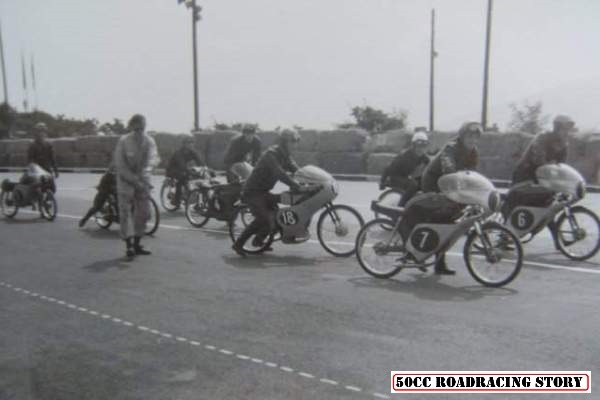 |
Zandvoort, Holland |
 |
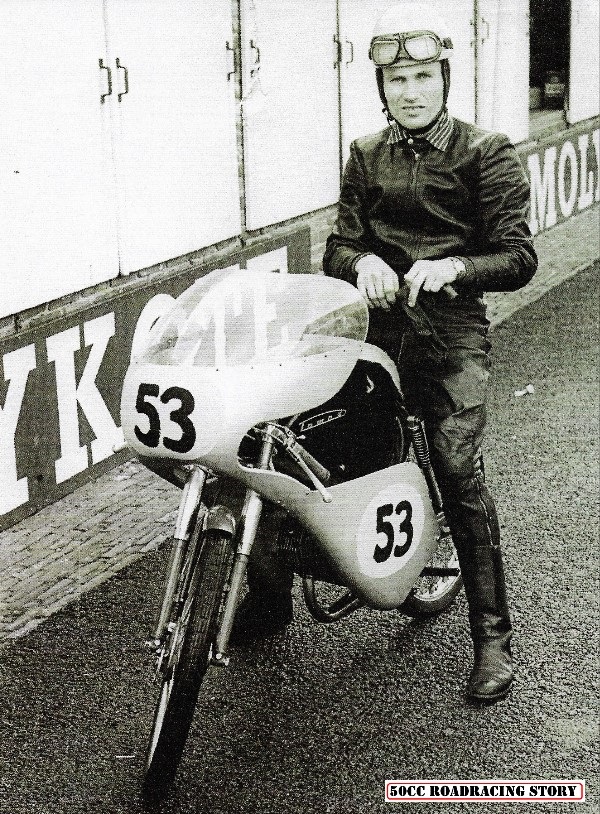 |
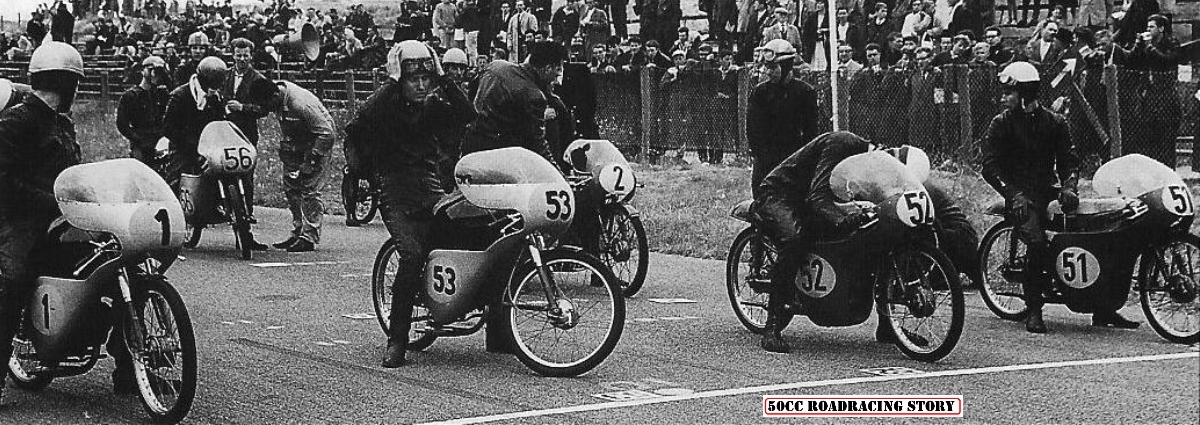 |
 |
 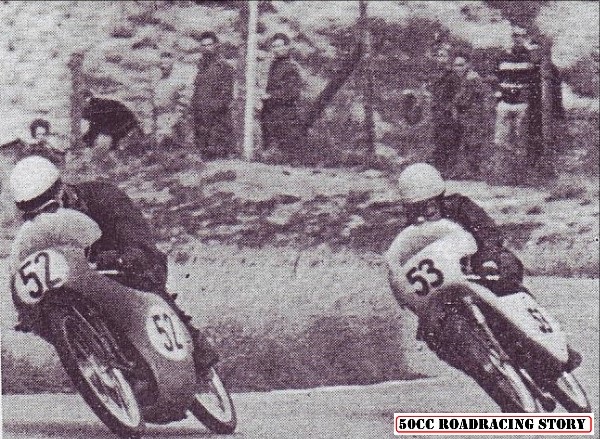 |
  |
 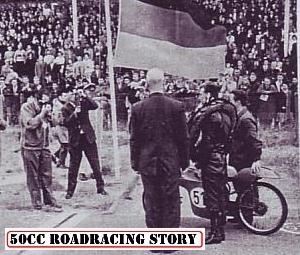 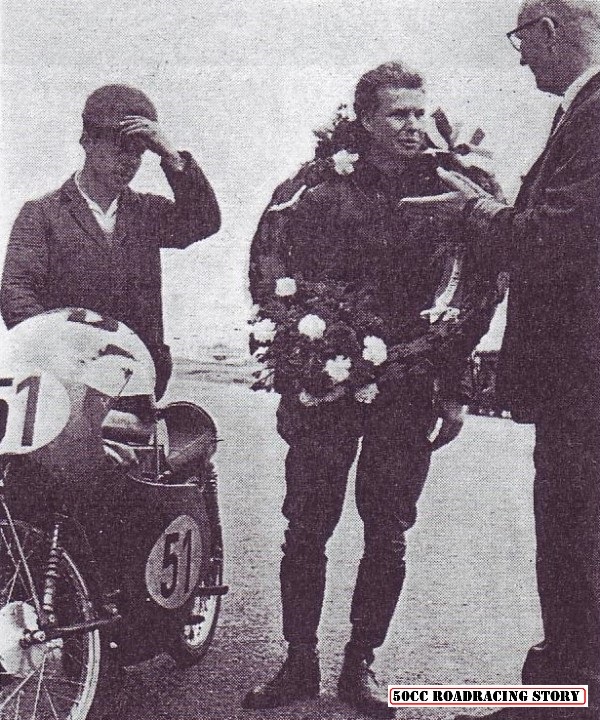 |
Bruxelles, Belgium |
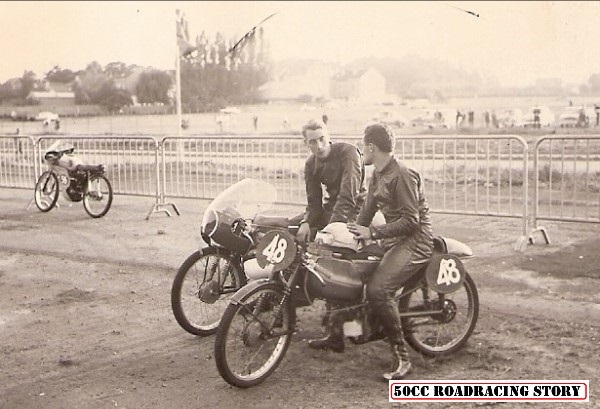 |
  |
 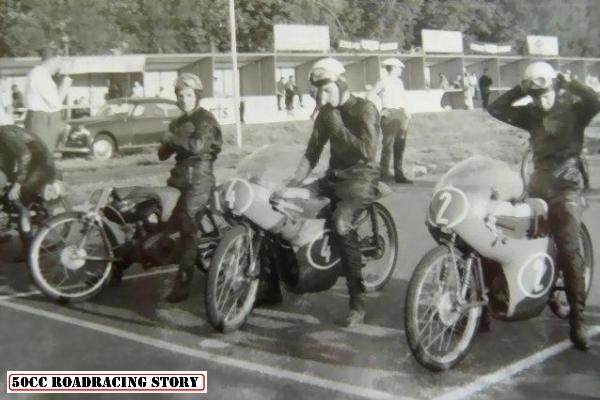 |
Zaragoza, Spain |
 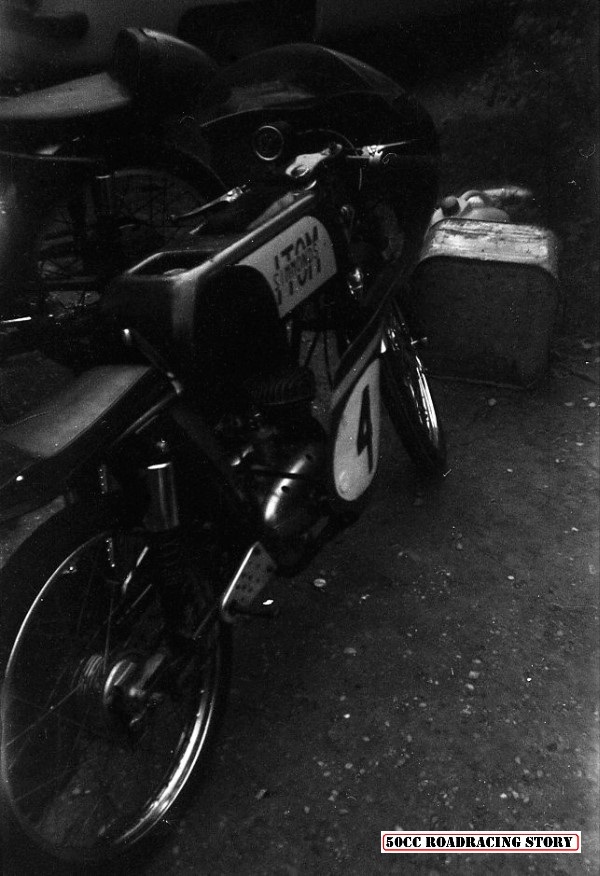 |